Table of Contents
- Google’s June 2024 Link Spam Update penalized low-quality link tactics, notably in the SaaS sector.
- Key red flags include irrelevant guest posts, exact match anchor text, AI-written content, and high DR sites with no traffic.
- Listicle and roundup posts appear increasingly devalued due to widespread abuse in link exchanges and marketplaces.
- Natural, value-driven link building—especially with proprietary data or informational content—appears to be the safest strategy post-update.
- Disavowing bad links appears to have limited efficacy; focusing on quality and relevance is a more sustainable SEO approach.
In June 2024, Google announced a new spam update to combat spammy link tactics and manipulation.
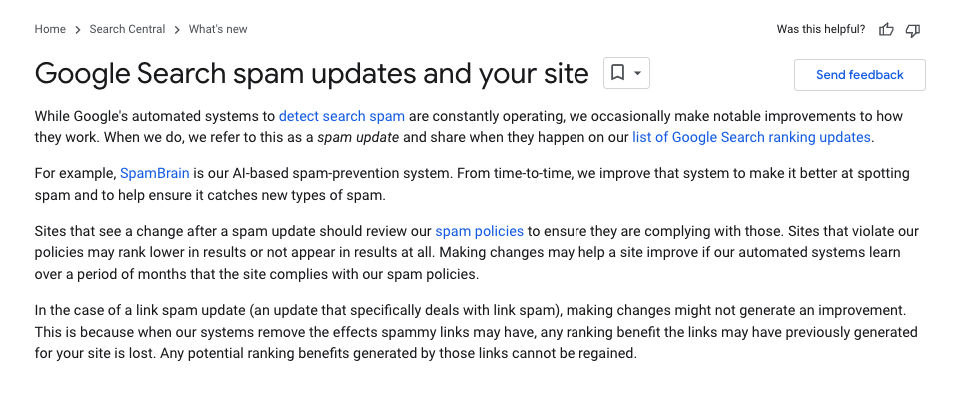
With all of the Helpful Content Updates going on, I feel this went overlooked.
But it had some major repercussions in the link building and SEO industry.
After evaluating 50 sites in the SaaS space, more than half of the sites were hit by the Link Spam Update.
So, let’s get into the impact of the Link Spam Update in June of 2024.
Spam Update Nullified Traffic Gains From Links
Link Spam may have hit a lot more sites than we think.
The primary signal of a link spam penalty on this list was an abrupt flat traffic gain starting June 2025, while links steadily rose.
For example:
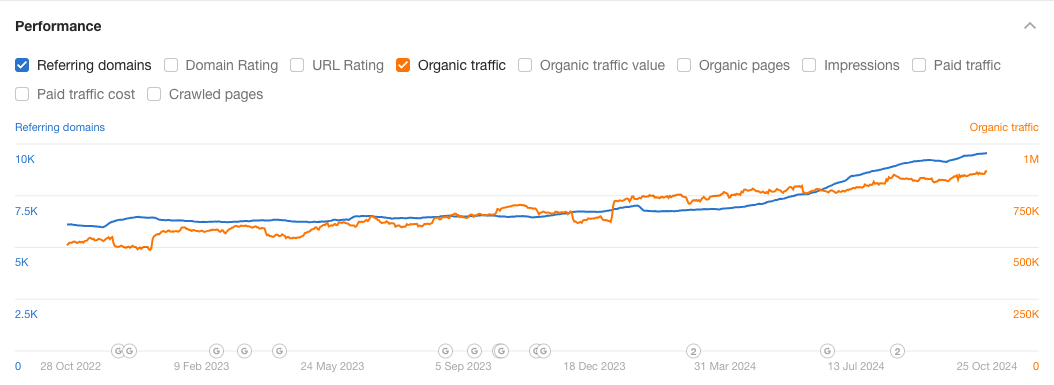
Some even saw dips:
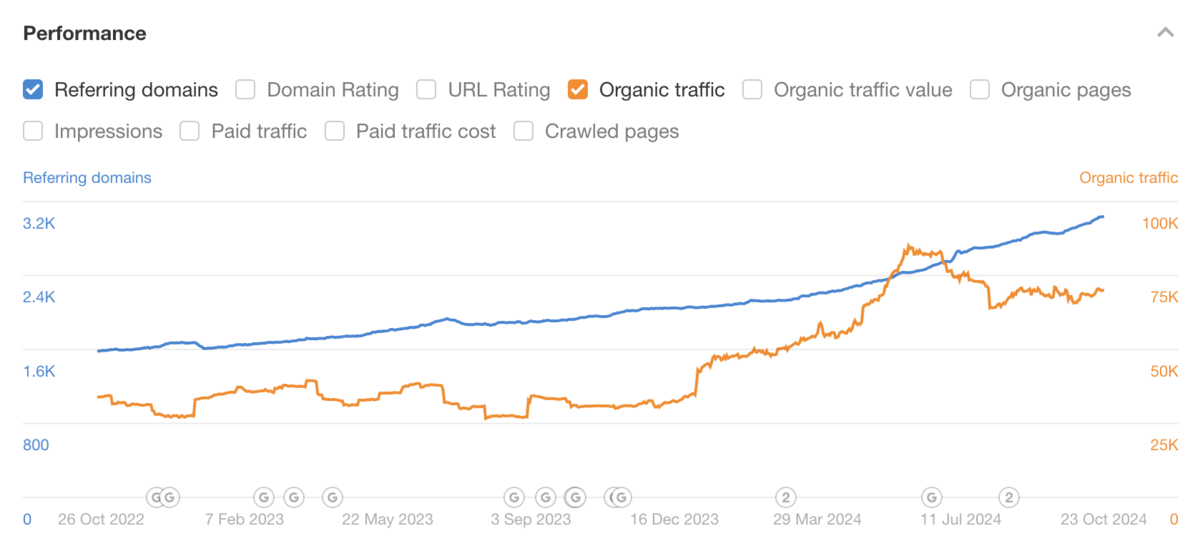
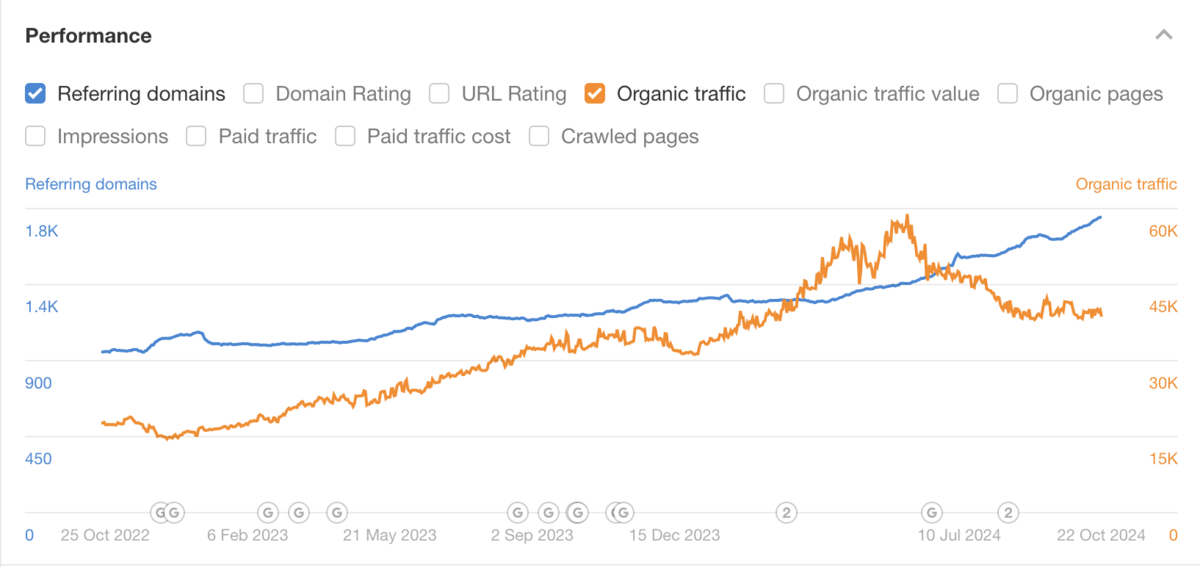
Low-quality links are most often the cause of this, but there may be a new kind of content on Google’s hit list, which I’ll get to later.
First, let’s look at some of the most common low-quality links I saw on the sites affected by the Link Spam Update.
Negative Link Spam Signals To Look Out For
Based on my previous experience and the data from this study, here are some of the tell-tale signs of link manipulation (mainly purchased guest posts, insertions, or exchanges).
- The post topic is irrelevant to the software
- Multiple posts written about similar topics on separate sites published around the same time
- Anchor link with exact match keywords
- AI-generated or low-quality content
- Full post with a single outgoing link
- Links that feel shoe-horned into the copy
- Two links to a domain in succession
- Site with high DR but low traffic
In most cases, the negative signals aren’t just one of the above but multiple.
I will try to obscure these sites so I’m not calling anyone out specifically.
Posts Unrelated to the Target Site’s Core Topic
Relevant links are such a core piece of any backlink profile these days.
The easiest way to tell if a link isn’t relevant is to look at the post’s title. For example, links to an electronic signature site were added to a post about “Signs She Loves You Deeply.”
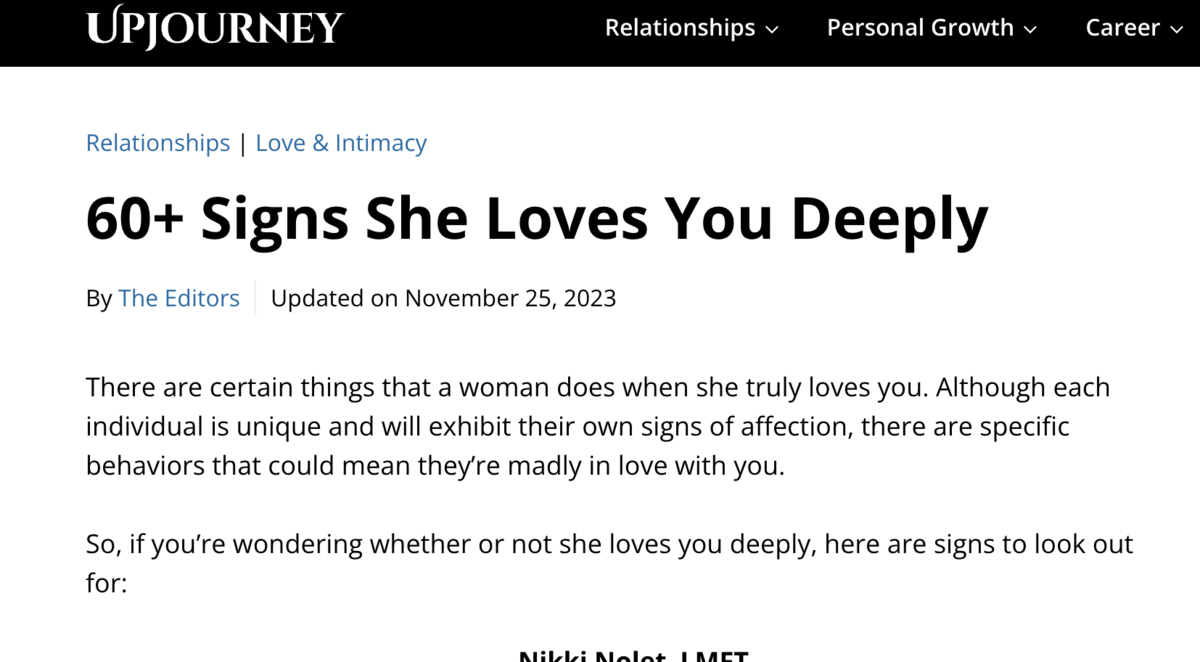
And another about machine learning.
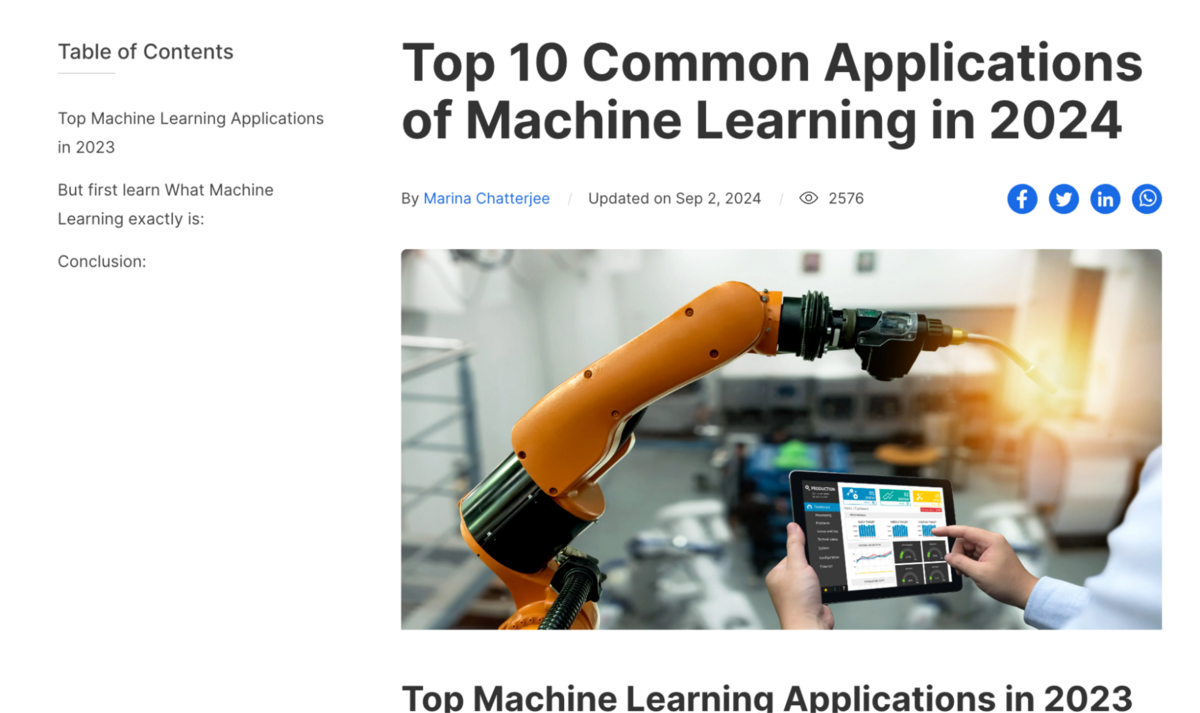
Neither have anything to do with digital signatures.
In the cases above, there are two posts in which a quote from the CEO was added.
As James Brockbank, CEO of Digitaloft, put it in our podcast about link relevancy, you should always ask, “What do you have the authority, the expertise, and the experience to talk about?” before pitching.
If you are going to pay for placement in the case of link buying, it’s in your best interest to find the exact right kind of article.
The easiest way to start is the site’s industry, followed by the post title.
Similar Posts on Different Domains in Rapid Succession
With many link vendors, you tell them what kinds of links you want and in what time frame.
This can be a negative signal to Google, especially when the sites have low DR.
For example, I see several similar posts posted about “cold emailing illegal” within days of each other.

These aren’t the exact same articles you would find in syndication, but they are similar enough that a vendor might just tweak them and republish them on another site.
Plus, the anchor text is very similar, which we’ll get to next.
Too Much Exact Match Anchor Text
In my analyses of the sites hit by the algorithm, I would export the backlink list and sort the anchor text alphabetically.
Often times, I saw exact match anchor text like this, which is either exchange, insertion, or buying:
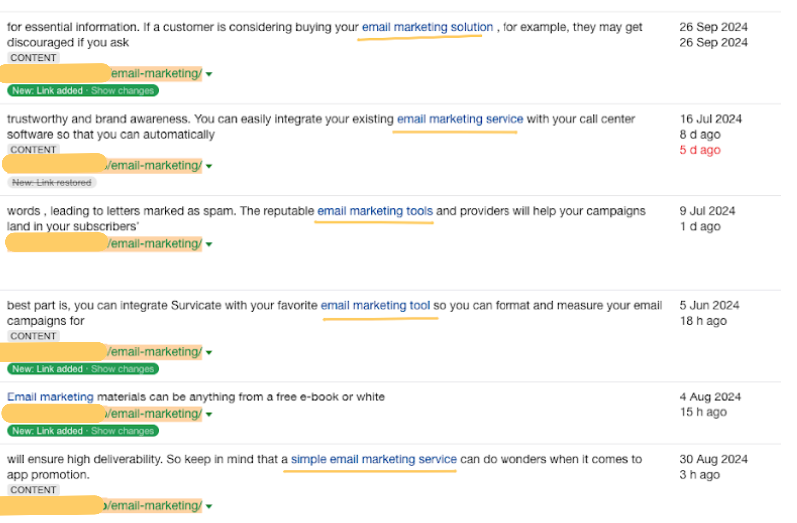
I know these (and others I saw) aren’t naturally linking because they don’t rank for any keywords.
So, without any type of promotion, there’s no natural way these pages get your site in front of people.
For instance, in the example above, if your site ranks for “email marketing tool,” you are much more likely to get found in a Google search and linked to using the term “email marketing tool.”
AI or Low-Quality Content
Another test I would do to confirm the quality of the content and likelihood that it’s from a guest post or link marketplace service is to run it through an AI checker tool like Copyleaks AI Detector Tool:
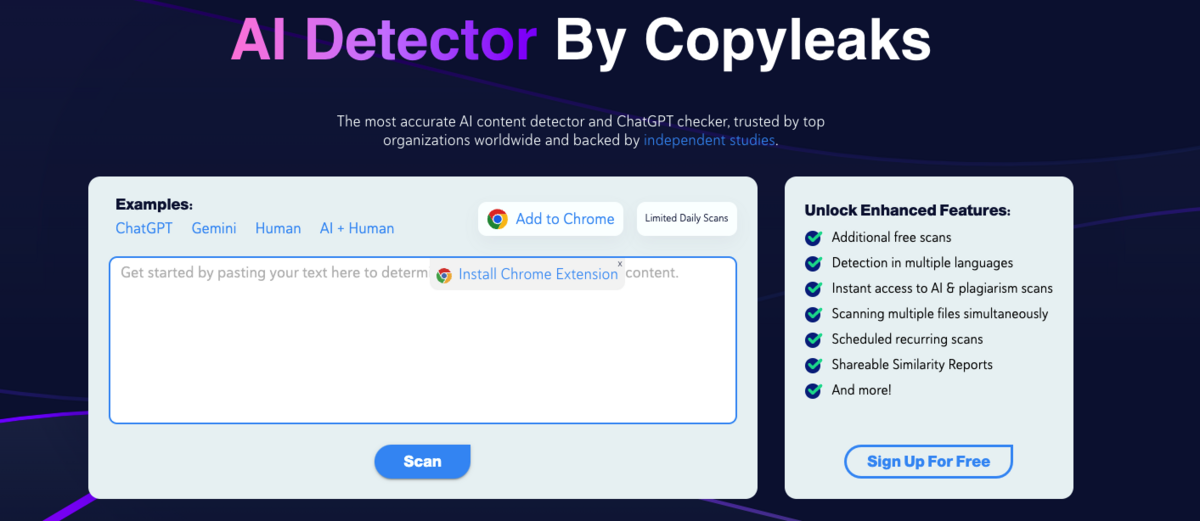
Often, you see a high likelihood of AI-written scores.:

This is a big problem these days, with link marketplaces and guest post agencies trying to produce content as quickly as possible.
The Single Outgoing Link
For example, here’s a site with a listicle (which I’ll cover shortly) that lists many tools. But, for some reason, they only link out to one tool:
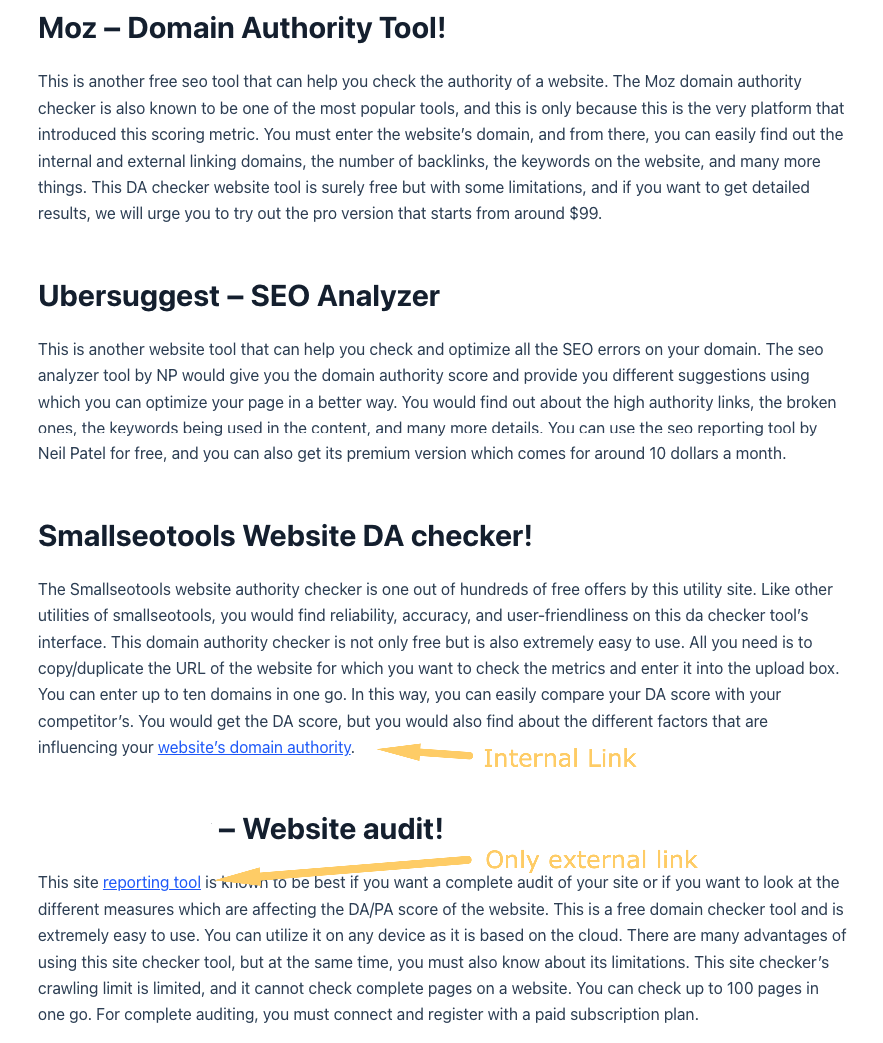
I saw this a lot on list-type posts, and it’s a clear negative signal.
Two Links at the End of a Post
Another clear signal and common practice from link marketplaces is when you see two links back-to-back to the same domain.

One typically goes to the main post or domain, and the other goes to a supporting article.
(I’m not sure why that is common practice, but from an SEO perspective, it actually passes less value to the site if there are multiple links to the same domain.)
Low Traffic, High DR/DA
Unfortunately, DR and DA can be manipulated. These are not metrics to trust alone; neither is a static traffic number.
Yet, I saw sites repeatedly with high authority metrics like DR and DA but no traffic.
The Helpful Content Update wiped out many guest post sites on most link marketplace databases. (I had to cut down our guest post sites list considerably!)
For instance, here is a site with a DR 64 with 0 search traffic sitewide.
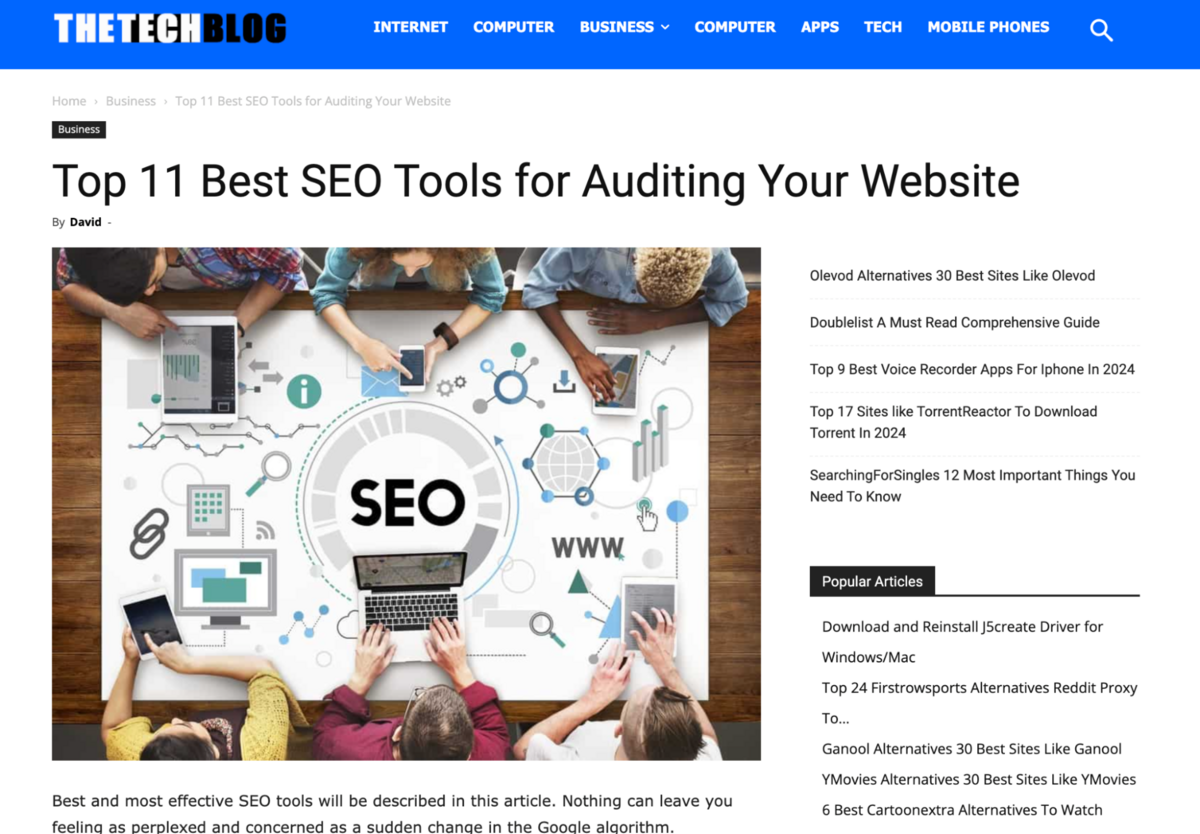
Here’s what their traffic looks like.
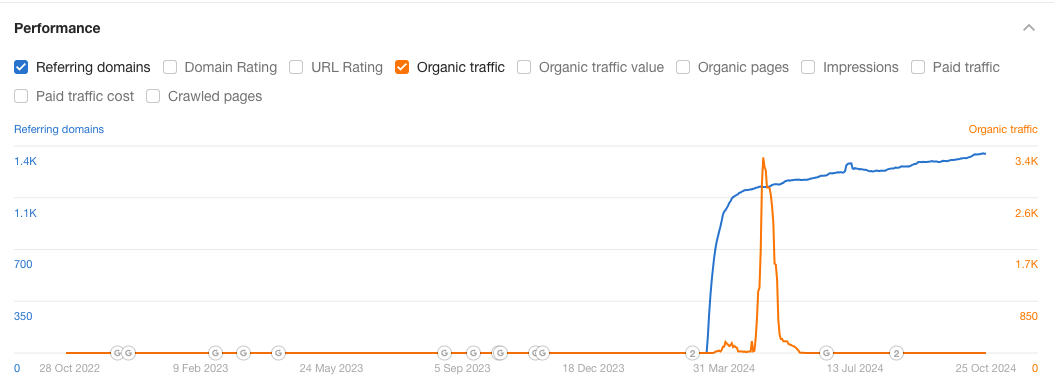
You can see this DR/DA manipulation at work.
Next, you’ll see why I think Google is upping the ante and potentially devaluing links from an entire post type.
Most Listicle and Roundup Posts Are Low-Quality Links
In many cases of sites hurt by Link Spam, there were clear signals of link buying or insertion on guest post sites and link farms that you see in shared spreadsheets and link marketplaces (which I’ll get into in the promotion section.)
But what about link exchanges?
These are less easy to track—especially when using the ABC method.
The most obvious of these is the inclusion in listicle/roundup posts like you see below:
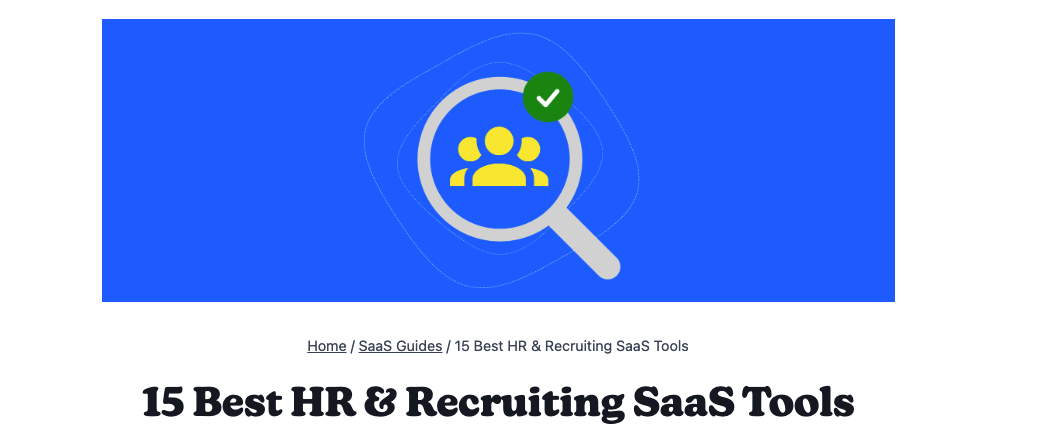
A lot of these posts are written organically with no strings attached.
But, most are not organically placed. They are part of link exchanges like this:
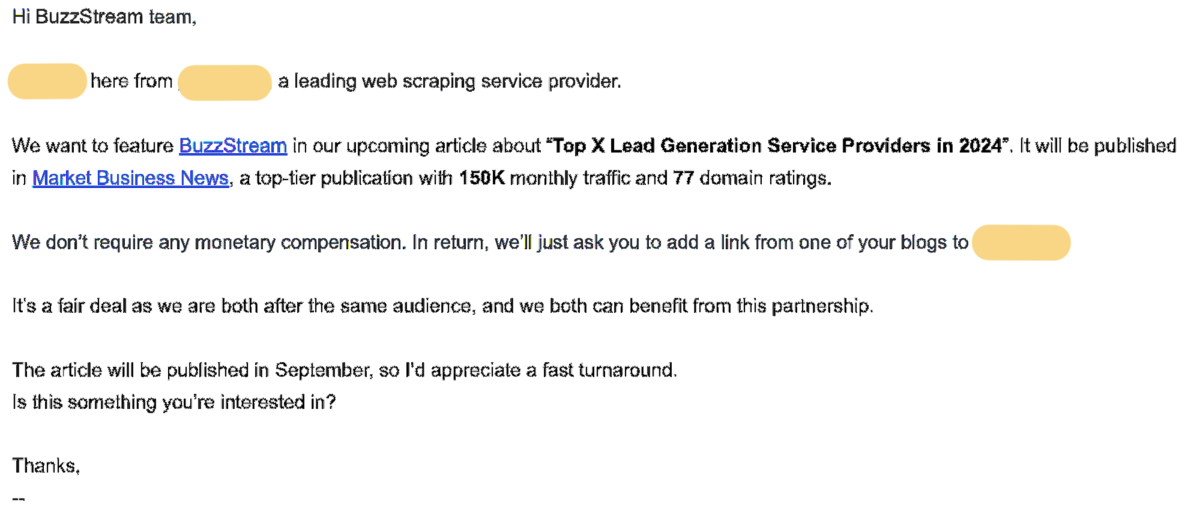
Because these kinds of posts are rife with link exchange, most of these links are probably low-value or potentially even devalued by Google.
Sites are doing everything right, getting listicle/roundup links from quality sites, but we still saw traffic plateaus around the June Link Spam Update.
So, whether you buy, exchange, or end up on them naturally (as most sites have), you still suddenly notice your links aren’t driving traffic as much as before.
It may just be a correlation, not causation, here, and these kinds of posts are just a new exploited tactic used by low-quality sites.
However, the evidence here makes me think that Google is taking action.
Alternatively, it may be a low-quality article on a low-quality site.
Are All Link Exchanges Bad?
No, but they are risky these days.
In my post on link exchanges, I discuss the right and wrong ways to do them.
Most link exchanges, especially ABC link exchanges, are part of a network where someone has a list of partner sites.
So, even though you think you are obscuring the path, they all exist within the same interlinking network.
There are even communities for this sort of thing:
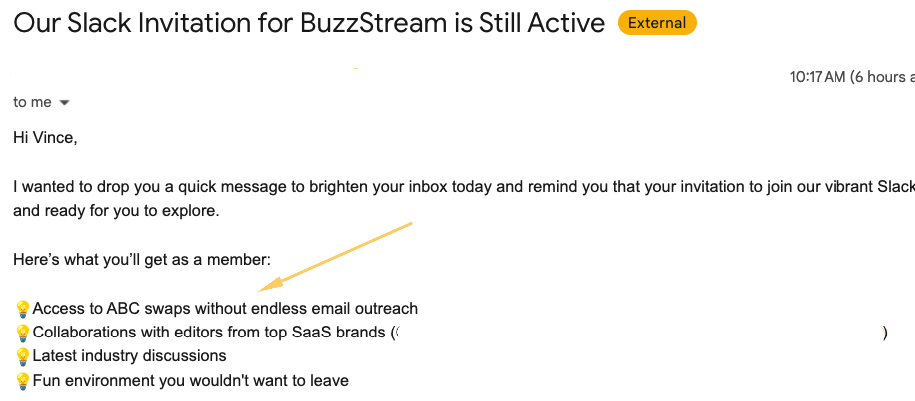
The best way to do a link exchange is when it comes across naturally, with no strings attached. For example, someone pitches you a statistic that would really make an article that you wrote more appealing and vice versa.
That, to me, is much more natural than these networks.
What Can You Do About a Link Spam Update?
Google says you can disavow potentially harmful links. But Ahrefs tested this, and it didn’t seem to affect traffic.
So, it’s unclear whether or not that is a valuable action.
To me, the best thing you can do is continue building links correctly and maintaining SEO best practices; hopefully, these will outweigh the ones that Google doesn’t like.
Based on the sites that I evaluated, the link-building strategies that seemed to be the most link-spam-free were the ones that focused on building valuable informational content, proprietary data studies, and reports.

 End-to-end outreach workflow
End-to-end outreach workflow



 Check out the BuzzStream Podcast
Check out the BuzzStream Podcast







